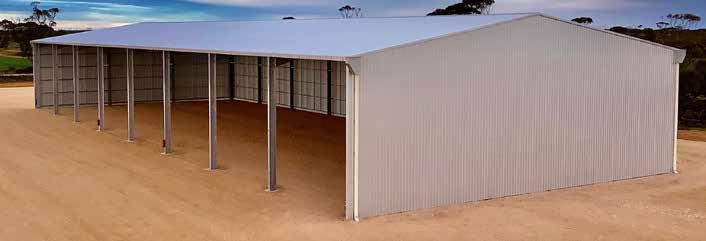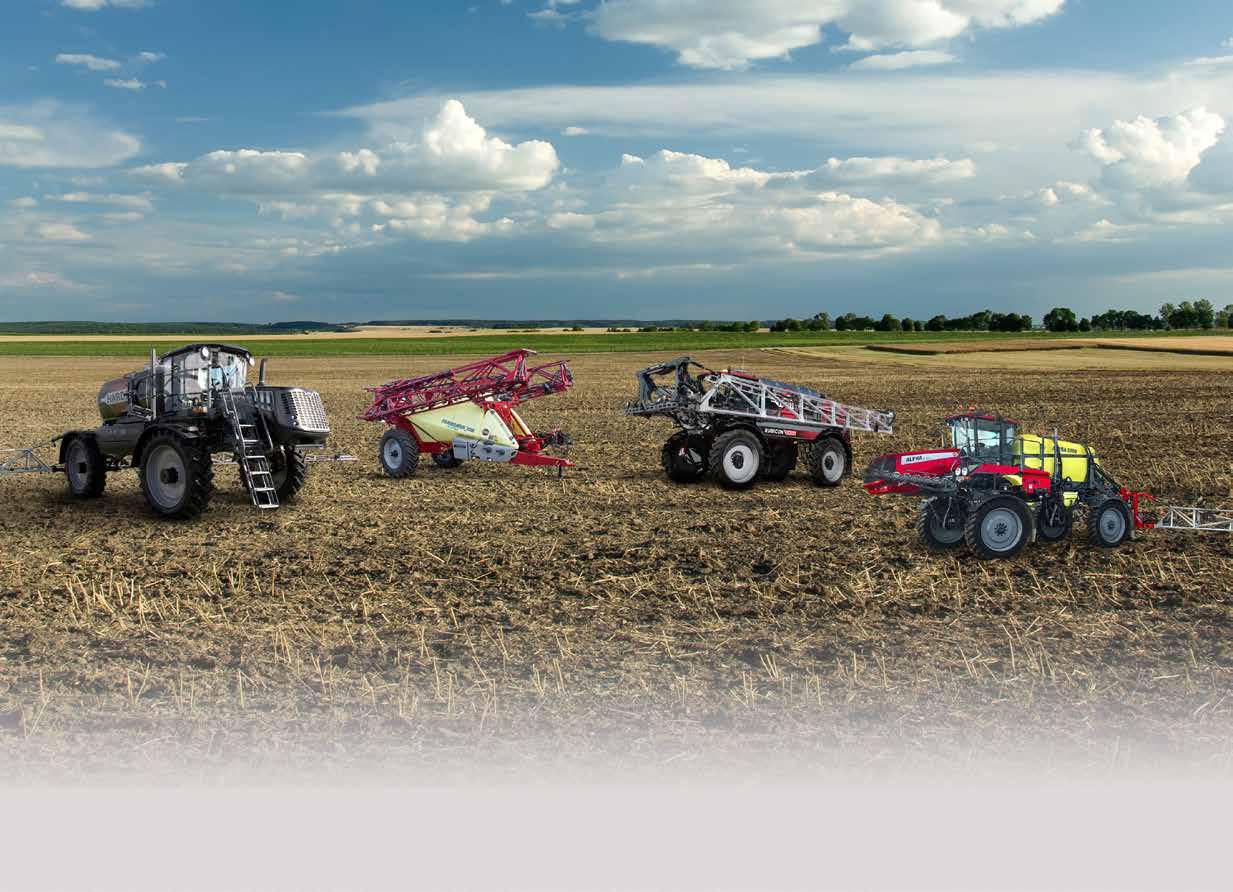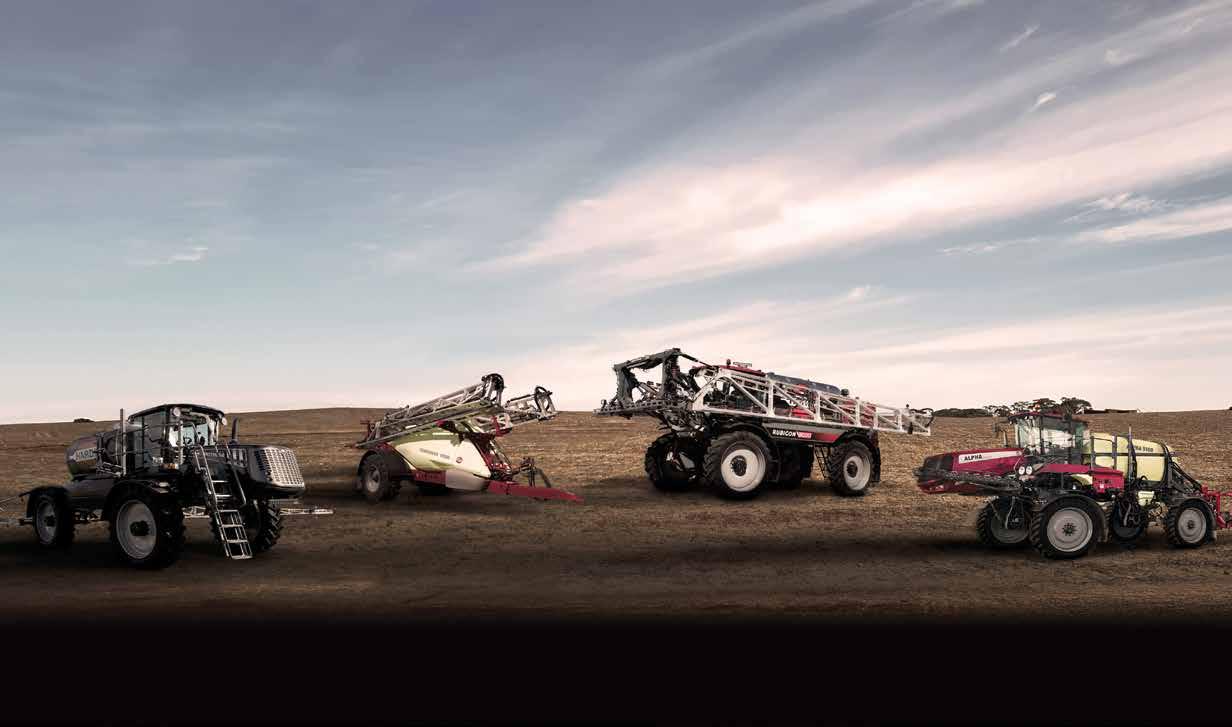






























































Headers are slowly entering paddocks across the Wim mera as farmers test how wet pad docks are and if harvest can begin following above-average rain in spring.
AWB Wimmera and Western Dis tricts territory manager Darcy Ingram said harvest was getting off to a slow start this year.
“The cool, wet conditions have re sulted in a very slow start to harvest this year, with most running at least two weeks behind where they’d usu ally be,” he said.
“A few warmer days have meant we’re now seeing activity increase across most of the Wimmera; howev er, it is far from uniform with timing of sowing, soil types and paddock gradients all playing their part in how crops mature and what areas can be accessed.
“The high rainfall year has resulted in an extremely unusual amount of water lying around, with excess water unfortunately having nowhere to go due to a full subsoil moisture profile.”
Hoffmann Contracting owner Scott Hoffmann said unlike previous years, he did not send any headers to New South Wales for the start of harvest season.
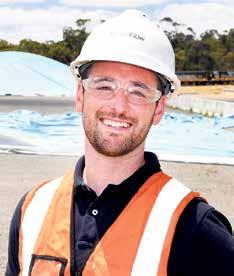
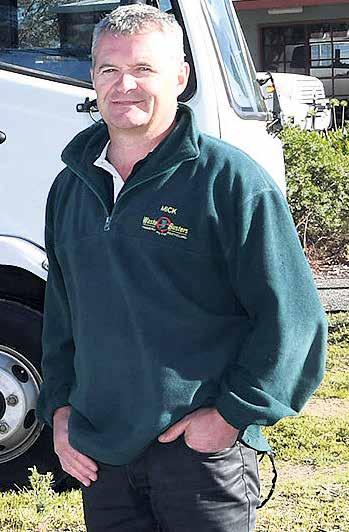



“It didn’t stop raining. It wasn’t worth it and I had to start harvesting
at home,” he said. “I took two headers to Carwarp two- and-a-half weeks ago and it’s been stop-start up there.
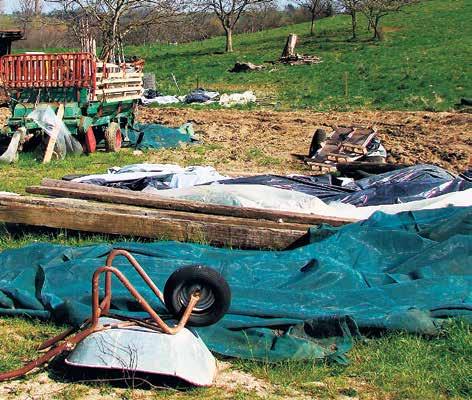
“We got into the barley at home in Rainbow last week.


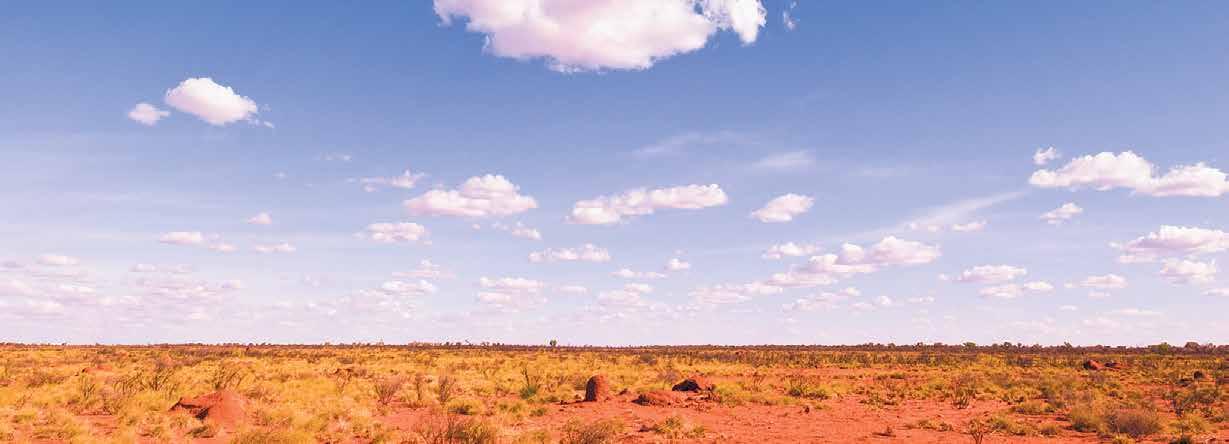
“We have bogged the chaser bin once and the headers have been bogged up in Carwarp, but we should be okay for the season as the land undulates and a lot of the water runs off.

“However, when you start going south to Nhill and Warracknabeal, I don’t think they’ll be rushing to get into the paddocks just yet.”




Mr Hoffmann said he thought his wheat and barley would fare okay this season, despite the rain.

“Our barley is pretty good consider ing. It’s not malt but sitting at BAR1, which was surprising,” he said.
“It has done better than I thought in terms of yield and quality, plus prices are good at the moment. It’s probably the best yield I have ever had in a crop. I’ve heard reports there is poorer quality around.
“Lentils is the one we don’t know about. No-one is in lentils yet and we’re still a week away, but it looks to have received the biggest impacts from the rain.”
Mr Hoffmann said cooler-than-nor mal weather at this time of year, plus the rain, was slowing operations.
“The challenge is the cool weather and moisture coming up at night, which means we can’t do the hours

and we’re not getting as much done,” he said.
“It’s going to get better. We’re wait ing for more paddocks to dry out.”
Mr Ingram said it was too early to know the full story on grain quality in the region, but there would be some impacts from the high rainfall.
“Crop disease has been prevalent this year with conditions not only proving ideal for disease development but also making it extremely difficult for growers to access paddocks in an attempt to manage these issues,” he said.
“Low test weight, low protein, sprouting and staining or discoloura tion are all symptoms of wet seasons, with the risks from additional rainfall increasing once the crop matures.
“In years such as this, where pos
sible, the grain industry continues to work on ways to receive normal ly out-of-specification grain to assist growers and keep exports flowing.
“Across the east coast, we have seen an above average presence of mould in canola seed resulting in the Austra lian Oilseed Federation establishing a seasonal standard to allow for seed with mould up to 40 seeds per 1000.
“GrainFlow receival sites have ad opted this standard to allow growers with affected seed to still deliver into the bulk handler system at no discount to CAN1 canola grade.”

Mr Ingram said from a marketing perspective, the likely outcome of more lower-quality grain was twofold based on supply and demand.
“With a lot of this cereal crop po tentially downgraded to feed quality, we would expect that premiums for high protein milling wheat and malt barley will continue to move higher as millers and maltsters are forced to compete to meet their needs,” he said.

“We still have solid export and do mestic demand for feed grains, how ever, values for certain grades are at risk of coming under pressure should we see a high volume enter the market over a short time.”
Nutrien Ag agronomist Simon Sev erin said he had never seen the indus try suffer disease and loss throughout his 25-year career, like it has this year.
“Being such a wet year, there have been challenges with disease manage ment and there are some crops that were waterlogged and died,” he said.
“Maybe 40 percent of crops across the district have been waterlogged.
“Faba beans have suffered a lot of disease, as has wheat.”
Mr Severin said grain quality would decrease, with more grain being grad ed for feed.
“I don’t think we will have an over supply of feed grain, however the demand will remain,” he said.
“Stock always need grain so feed lots of intensive grazing systems will buy.”
Mr Severin said challenges would continue into summer for farmers.
“There’s been lots of machinery bogged and harvest brings its chal lenges with trying to get trucks into paddocks to get grain out,” he said.
“With a late harvest, there will be testing times ahead for farmers as they work to gather what crops they can from paddocks.”
“Expectations are that due to issues with paddock trafficability and late crops, not to mention the threat of additional weather, the harvest period is likely to go on much longer than usual”
– Darcy Ingram, left






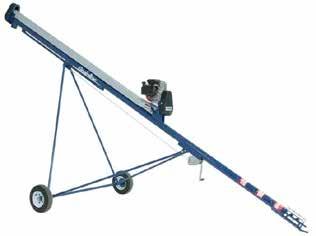
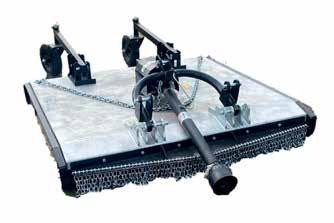


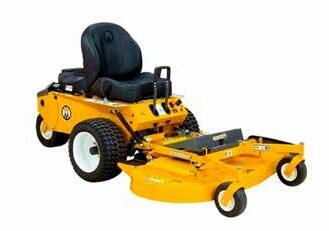
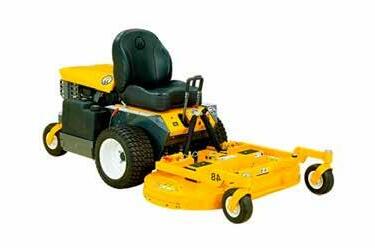


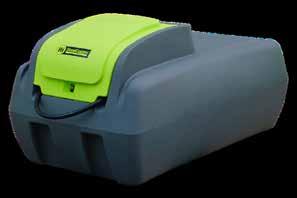
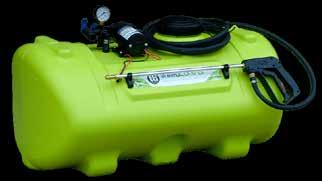
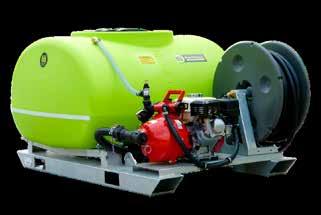










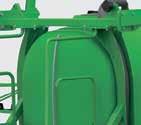









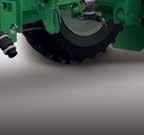










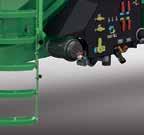









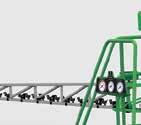







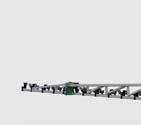




























Just when we all thought farming was entering a golden era, we were reminded of how quickly the tides can turn.
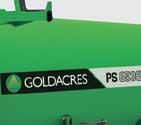



















La Niña, Spanish for ‘little girl’, decided it was time to linger a little longer and now we’re having some of the worst and longest floods in memory.


It’s tempting to turn off from the relentless bad news, but I think we owe it to those going through living hell to stay with them; to em pathise and to thank our lucky stars it’s not us.

That became blatantly clear when I drove to Rochester a few weeks ago, when roads started to open, to report for Country Today
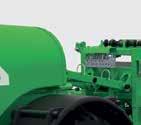
It’s a small town, just a tad over 3000 people, though I think we can bring that back a few notches due to the floods. There will inevitably be some who won’t come back.
Like so many small rural townships, there’s a disproportionately high number of elderly resi dents. Thankfully, all survived – but many were evacuated to relatives in Melbourne and around the state, and for others, to any nursing homes able to take them.

I spoke to one Rochester resident who had to tell his 85-year-old mother it would be many months before she was able to return home. She was devastated, as we all would be – made all the worse by the possibility that she might never make it home again.



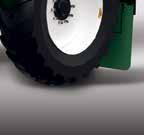
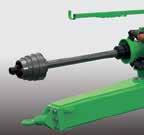





I will admit to ‘flood fatigue’.
Six weeks in and there’s still more to come as the waters march relentlessly west before turn ing south to the sea in South Australia. Already towns such as Mannum, just an hour-and-a-half from Adelaide, are being warned the floodwaters are on their way and levees are being built.

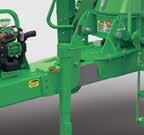 with Libby Price
with Libby Price


I can’t help but think back to the Gippsland fires of 2006, which burned for 69 days. It was the waiting that was the most stressful.
I’ll never forget a farmer saying to me that he’d prefer drought any day. He was used to it and knew what to do, but this was an entirely different situation and all he could do was sit and wait and hope the fires would take a different path – knowing if it wasn’t him, then someone else would suffer the devastation.
Last week the CSIRO and Bureau of Meteo rology released the latest State of the Climate Report. Hot on the heels of COP27, where it seemed very little progress was made on dealing with climate change on a global level, it wasn’t encouraging reading.



I spoke to Karl Braganza, the manager of cli mate monitoring at the bureau.
Ringing in my ears, are his ominous words: “Understanding that the climate system is going to continue to change for the next couple of de cades due to greenhouse gases that are already in the atmosphere, it’s really the lived experience of the past 10 years that Australia should really start preparing to adapt to the significant events that are going to occur in the next decade or two.”

I know it’s not what you wanted to hear; but being the bearer of bad tidings is quintessential to what I do.

Numerous Tool Sets, Large 48” Wrench, Antique Fuel Pumps, Fuel Pump Nozzles, 4’ Fuel Tanks, Simplex Fire Extinguishers, Water Pump Unit, Old Style Small Motors – Bamforts, Villiers, Southern Cross, General Motors, Ronaldson Tippett, Rusty Hornsby, Lister to name a few. Volt Meters/ Amp Meters, Bench Grinders, Tap and Die Sets, Old Vintage Electric Drills, Dawn Hand Drill, Vintage Hand Saws, Numerous Planes including Stanley and Falcon, B.F.Sturtevant, No.3 Air Blower, Dawn Presses, Forge Blowers complete with stands, 3Hp Engine complete on transport, Collier, NOS Motors Pro 4 and 8.5hp, Bench Grinders and numerous cast iron Monkey Tail units
Early model Harley Davidson WLA with Side Cart, 1963 Ford Fairlane 500 (no book) V8 260 half motor, Early Model Chrysler Plymouth, T Model Ford Starter Boxes, Car Parts, Tractor Seats, Towing Trailer, Willys Jeeps. Antiques
Champion Spark Plug Cleaner and Display Case, Plume Enamel Sign, Golden Fleece Sign, Sunraysia Rims, Trawalla Jacks, Jacks, Leg Vices, Running Board Fuel Tins, Oil Drums – Mobile, Castrol etc. Blower Forges, Dawn Forge Blower, Hand-held Grinding Stones/Sharpeners, Wooden Boxes – White Rose, Plume, Texaco, Neptune, Golden Fleece etc. Antique Sewing Machines, Carnival Glassware, Pallets of Tin Collections including Shell, Golden Fleece, Robin Hood, Coca Cola, Pascal, Vacuum, Castrol, Mobil. Antique Radios, Vintage TVs, Army Ammunition Tins, Army Containers and Wooden Army Ammo Boxes, Antique Co ee Grinders, Meat Safe, Hand Meat Mincers, Numerous Books, Magazine Collections, Tractor Magazines, Large Steel Cabinets, Vintage Mix Masters, Copper Pot, Cigarette Tins, Jute Bags, James Bond 007 Unopened Car with Magazine Collection, Record Players, Cyclops 1956 Toy Tractor, John Deere Toy Tractor, Sharpening Stones, Brand New and Used Blow Torches of all ages and descriptions, Saw Bench Gauge, Sunshine Gates. Plus many more items. Terms:
AWimmera firefighting leader has reminded people of the high risks of fires on farms this summer season.
Ray Carman, of Carman’s Fire Equipment Maintenance, said the extreme wet weather meant the risk of fire was ‘larger than usual’.
Record-breaking rains has meant significant moisture, and moisture retention, along with significant grass growth in the latter months of the year across the region.
It is amplifying the seasonal threats and challenges of summer, farming and fire prevention.
Mr Carman said the ever-present threat of a haystack fire was enhanced this year.
“With extreme risk of haystack fires, it is important that farmers are aware of the amount of moisture within the stack, which can cause spontaneous combustion,” Mr Carman said.
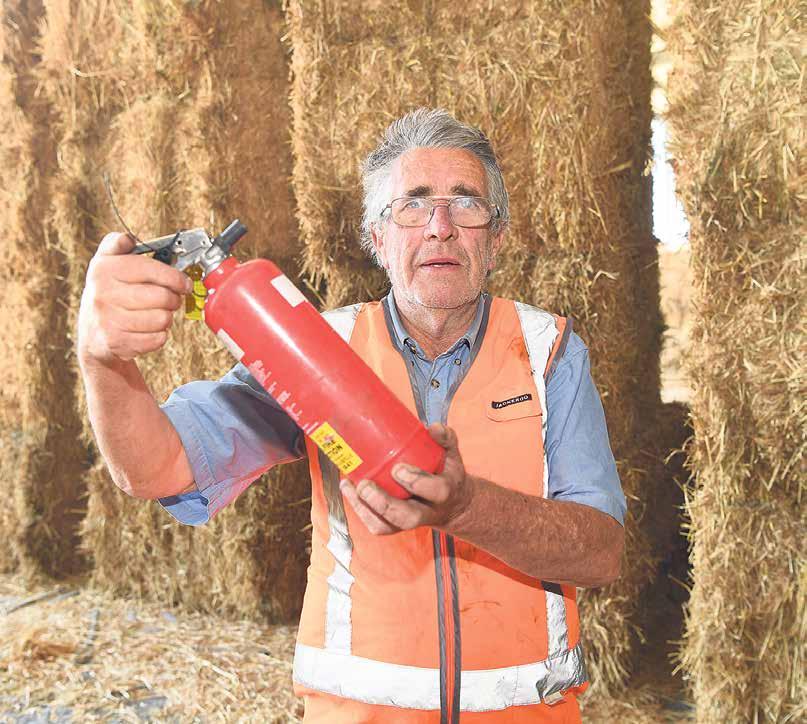
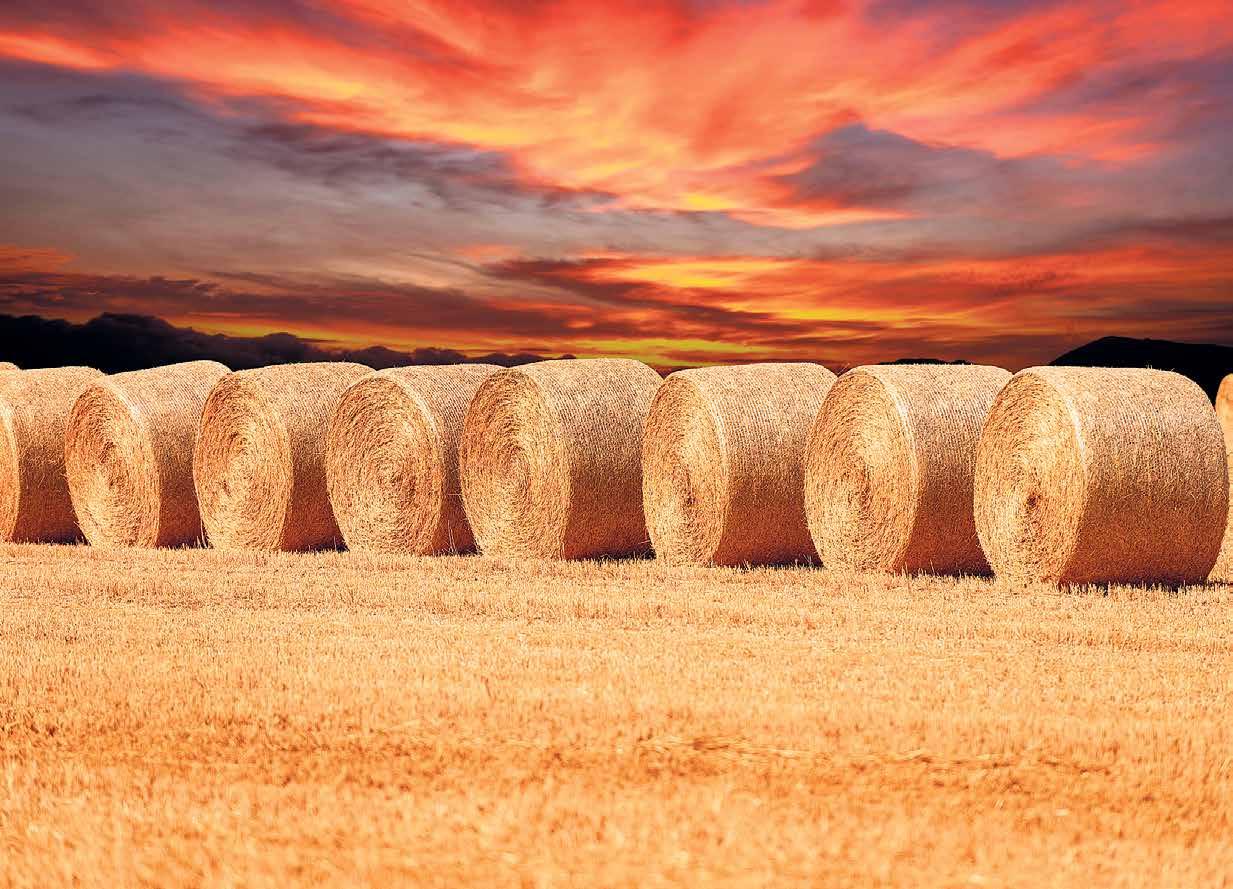
“If a fire starts within a haystack or hay shed, a large dollar loss can occur.”
Mr Carman said some machinery sat dormant for many months of the year, which could also pose a risk to the operators.
He stressed the importance of ‘being prepared’ — including up-to-date servicing and vehicle checks, and risk mitigation measures such as the installation and maintenance of extin-
guishers should an emergency arise.
“While harvesting, farmers need to be aware of dust buildup in the bearing areas of their machinery,” Mr Carman said.
“They should ensure, while harvesting, that they have a good supply of water to combat any fire that may occur.
“This may include a ute or tractor with a water tank and pressure pump.
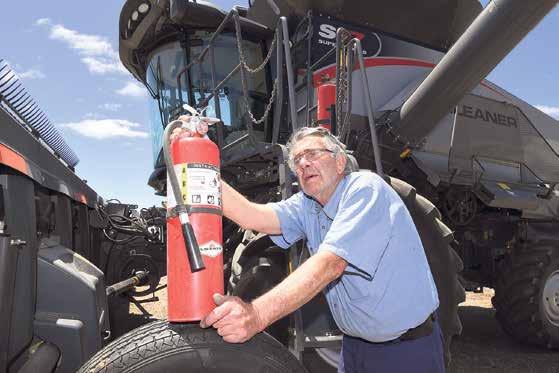
“We recommend at least a water-stored extinguisher and a dry chemical extinguisher be fitted to all headers and a water extinguisher fitted on the truck and utes that are being used at harvest time.”
Mr Carman said Horsham Fire Brigade could check and service any fire extinguishers to ensure they remained in good working order.

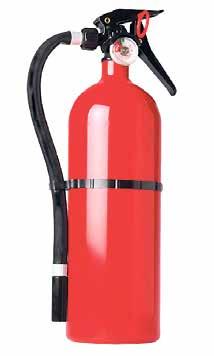
He said the brigade also offered a range of new essential equipment including fire extinguishers, fire hoses and hose reels, fire blankets, knap sacks and heavy-duty brackets for purchase.
Mr Carman said people wanting more information could phone Horsham Fire Brigade on 0439 826 872.
He said people could also consult their insurance company for recommendations of appropriate fire equipment for their property and circumstance.

An agriculture-technology venture committed to nur turing start-up innovation across Australian food and agriculture technology industries has found inspiration in the Wimmera.
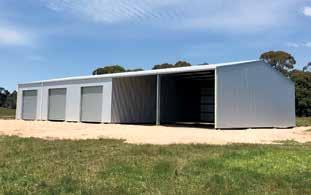
SproutX, an ag-tech collaborator that connects entrepreneurs in food and energy with educators and other business innovators, delved into Lon gerenong College’s DATA Farm In novation Centre last week as part of its curriculum.
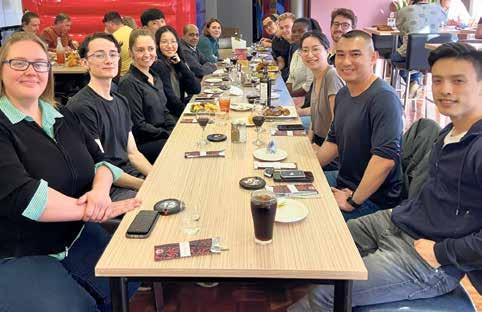
The group’s ‘pre-accelerator’ class, a cohort of agriculture-technology entrepreneurs enrolled in SproutX’s short course, included ‘tech-curious corporate employees’ and ‘early-ca reer innovators’ who were eager to develop their understanding of onthe-ground agricultural practices.
SproutX program manager Maxie Juang said the company had a desire to ‘shake-up’ the agriculture industry by facilitating intra-agriculture inno vation, as well as open up agriculture to inter-industry collaboration that was often at the forefront of innova tive technology.
“Some people think agriculture technology is just tractors,” she said. “But there are agriculture businesses that are collaborating with space-inte grated technologies and using satel lites to help with field management
and pest control, for example. In Aus tralia, it remains a very small startup environment because sometimes, when it comes to primary producers, it can often be about survival.
“Farmers don’t often have time to innovate, and it becomes an annual harvest cycle that takes priority.
“We hope to support the humans behind the businesses who want to shake-up the agricultural industry and see some advancements in what can be a clunky industry at times, espe cially for start-ups.”

Ms Juang said the trip to Longer enong was part of a regional tour of primary producers in north-western Victoria with its pre-accelerator class, who also visited farms at Birchip and across the southern Mallee.
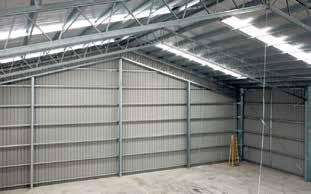
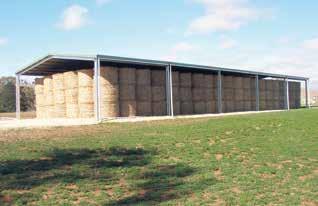
She said the trip to Longerenong was ‘perfect’ for the visiting SproutX cohort – a cohort that included people working across farm-labour, process management, wine and bio fertiliser industries – because the visit allowed them to connect their pursuits with practicalities of farming.

“In western Victoria, heavy-ma chinery and fertiliser industries drive the business and innovation spaces, which are often big monopoly-style business,” she said.
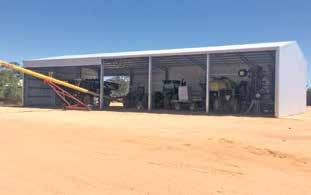
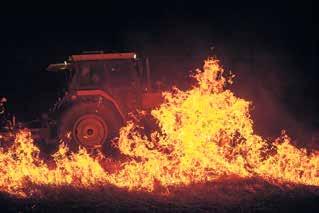
“That can often lean towards the status quo, so, the question is how we
do we push for more innovation? Our aim to create collusion points, and facilitate the meeting of people across agriculture, energy and food indus tries to make cross-over collaboration and innovation easier for start-ups.”
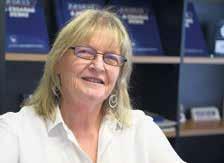
SproutX program officer Ashlee Tayler said innovations in staff train ing were also key for agriculture businesses and ‘streamlined’ training modules were often needed within the ‘innovation’ sector.
“There has been a shortage of la
bour after COVID-restrictions, but labour remains a key part of so many ag-businesses. But contract workers in the wine industry, for example, often remain under-trained and that can cause a lot of problems now, and down the track,” she said.
“If streamlined training modules aren’t in place, it can create a nega tive experience for potential talent and that can have a lasting impact as that information about the business travels.
“Often businesses don’t have time to train large amounts of contract work ers, but technology innovations, even not in the training space, can free up businesses’ time in new ways.”
Ms Juang said a holistic perspective about agriculture, food and energy businesses was key and she suggested sometimes it was a hinderance for new innovators and technology busi nesses to align with categorised in dustries.
“It is important to showcase what is out there, break barriers, shake up and go beyond the limitations of industry isolation,” she said.
SproutX’s ‘pre-accelerator’ curricu lum is a 10-week course for people wanting to develop their ‘novel tech nology solutions’, with the program also unlocking equity-free funding of up to $10,000 for entrepreneurs to ‘supercharge’ the next wave of Victo rian start-ups.
The group also offers a six-month ‘accelerator’ program for agriculture and food-technology start-up leaders, with office-space and capital grants available for accepted start-ups.
SproutX was founded in 2016 and was a joint venture between Findex and the National Farmers’ Federation.
Three paddock walks through Wimmera farms highlighted soil health, adapting to climate and creating diverse farming busi nesses.
Paddock walks through Kaniva, Willaura and Landsborough were supported by Wimmera Catchment Management Authority, CMA, with funding from Australian Govern ment’s national Landcare program.
Kaniva district farmer Steven Hobbs, Willaura district farmers Jack and Ce lia Tucker and Landsborough West farmers Zoe and Luke Crouch hosted the walks. Agroecologist Robin Tait, of Tasmania, was a guest speaker at the events.
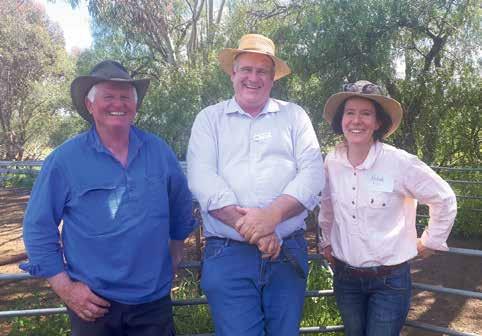
Wimmera regional agriculture Land care facilitator Bronwyn Bant said the paddock walks highlighted how farmers were actively building soil health, adapting to a variable climate and creating resilient and diverse farm businesses.
“We’re incredibly grateful to the Hobbs, Tucker and Crouch families for generously sharing their time and experiences with us,” she said.
“Hearing directly from local farmers about what has, and hasn’t, worked provides valuable information for par ticipants to take back to their farm to potentially adapt to suit their systems.”
Mr Hobbs hosted 15 farmers on

his mixed enterprise and spoke about changing his predominantly cropping farm to mostly sheep.
Mr Hobbs said it was great to share with others his motivation for change, how he overcame obstacles and the importance of collecting and measur ing impacts.
Mr Hobbs said he evaluated his farm profitability and the impact of chang ing climate conditions five years ago.
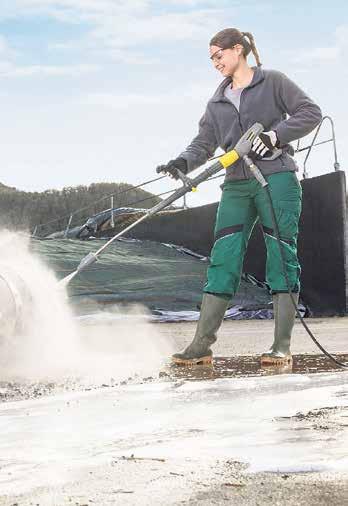
He discovered his sheep were paying the bulk of bills, his crops were only breaking even and frost was having a major impact on cropping, with his frost window increasing from 100 to 152 days.


“My biggest obstacle to having more sheep was that I don’t really like sheep and I wasn’t all that good at livestock management and handling, so I had to figure out how I was going to remove those barriers,” he said.
“I looked at our infrastructure, which was really run down, and took steps to improve it. I also came across an auto drafter, which would make things a whole lot easier for me, plus enable me to collect data.”
Mr Hobbs said he better understood how to improve the quality of his en terprise now and focused on increased fertility.
“I crammed a lifetime of learning about sheep into a very short time frame and in time, things started really falling into place,” he said.
“Sometimes, the best teacher is ex perience and what I like to share with others is how important it is to know exactly what you’re wanting to achieve. There is no silver bullet; it’s just about how the different aspects of your farming system complement and work with each other.”
Mr Hobbs took the group into a pad dock where he is running a soil carbon project, where he uses multi-species cropping and high-impact grazing to lift soil organic matter from a baseline of less than one percent.
“By doubling my soil carbon and the health of my soil, I’ll be increas ing my profitable returns and even if I can only achieve one percent, that’s double where I started,” he said.
“I’m feeding the soil below as well as above ground.
“Animals are such an important part of the landscape when it comes to getting carbon into soils, and I’m just trying to mimic nature as best I can to achieve what I want for my farm, such as healthier soil.”
Mr Hobbs is grazing 350 sheep an
acre and shifting them every two days. “How you go about things depends on the speed at which you want to see changes happening, and it’s also im portant to set up an area on your farm dedicated to trials,” he said.
“If you do something on a trial area and it doesn’t work, you’re not put ting your whole farm at risk. If it does work, you can expand the area.”

Mr and Mrs Tucker took 25 people on a tour of the sheep, cropping pad docks, machinery sheds and wildlife sanctuary that make up their farming system.
Strict-timed grazing, annual reveg etation projects, use of biofertilisers and compost extract and a 56-hectare wildlife sanctuary established in 2016 are part of ‘Rhynie Pastoral’.
“Our business is really focused on combining conservation and produc tion and hosting a paddock tour is a really great way to show people a reallife example of how this can be done,” Mrs Tucker said.
“Jack and I always get as much out of a day like this as the people who come, because it’s such a great oppor tunity to share knowledge and experi ences. It’s also a good way to develop our network. The more people you can talk to and keep in touch with when you’re trying new things, the more you can learn from each other.”
When wool prices crashed in the early 2000s, the Tuckers shifted from what was primarily a merino woolgrowing business to predominantly broadacre cropping.

In 2010, dorpers caught their eye and they bought their first ewes the following year.
“Dorpers have exceeded our expec tations, in quality and production, and in 2019 we decided to expand our dorper enterprise, which has resulted in our mixed cropping and meat sheep operation,” Mr Tucker said.
“Since moving towards mixed farm ing we have shifted from a conven tional system towards a regenerative one, which focuses on improving soil health, increasing biodiversity and be ing more resilient. We make decisions based on our own experience.”
The pair said production increased in their timed grazing system, which op erates on the principle of eating onethird, trampling one-third and leaving one-third.
Mr Tucker said multi-species peren nial pastures played an important role.
“We have lucerne, clover, phalaris, cocksfoot and a few other species and we aim to increase biodiversity, soil health and function while ensuring we have year-round pasture available to our livestock,” he said.
Mr Tucker said regular sap testing in cropping paddocks gave them a good handle on plant quality and they
shifted towards using foliar inputs rather than traditional fertilisers.

They spend about $200 a hectare on inputs.
“We don’t have the best-looking crops in the district, but that’s not our aim,” he said.

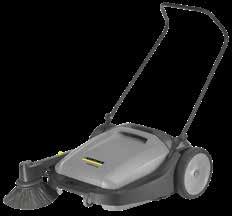

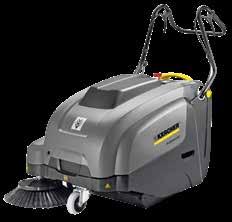
“Quality is our goal, along with im proving long-term soil health. We’re also lowering our risk by spending a lot less than the district average on inputs. This wet season we’re having is testament to the risks involved with cropping with high levels of plant disease and wet paddocks hampering harvest efforts.”
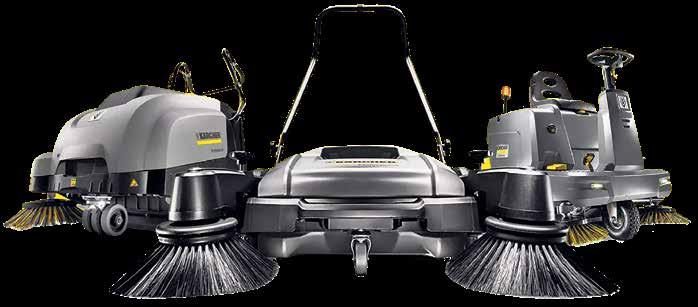
Mr Tucker said although they were moving away from the use of syn thetic fertilisers and insecticides, they kept them in their toolbox to use if needed.
Mr and Mrs Crouch own about 120 hectares and lease a further 320 hec tares and hosted 20 farmers on their diverse mixed farm.
They are building biodiversity and addressing erosion with native species and saltbush plantings to reduce runoff into their waterways, which flow into the Wimmera River.
When they completed a regenera tive agriculture course in 2020, they said they realised there was a system already in place that fitted in with how they wanted to farm.
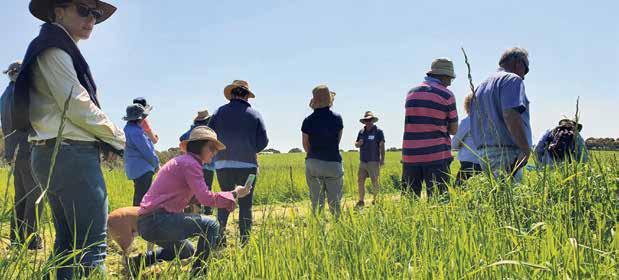
The course highlighted they weren’t limited by their land size and had am ple opportunities to grow their farm business.
Mrs Crouch said the pair were stuck in a reductive attitude and limited to what they thought was a small land area.

“Now we feel like the sky is the limit,” she said.
“We’re only small fry, but it’s not the size of the land that matters, it’s what you do with those hectares.”
Mrs Crouch said growing a multispecies cover crop was a key turning point from a soil health and financial perspective.
“Eighteen months ago, we planted 45 hectares of a nine-species mix and it’s been an incredible learning curve,” she said.
“It produced a massive amount of biomass, which we were able to graze with our sheep, cattle and the chooks we have in our pasture-raised egg business.
“We wanted to try a few different methods of handling the biomass so strip grazed a portion, we harvested some, we tried other grazing methods and knocked some down with a cou ple of old tractor tyres, just to see what would work best.”
Mrs Crouch said the cover crop provided green feed all summer, while everyone around them had dry pad docks and kept soils covered.
“When we’re sowing, we might put down 40 kilograms per hectare of single super, but apart from that we just use a biostimulant, worm juice and we’ve added in gypsum and lime where required,” she said.
Mrs Crouch said it was important to regularly test soils to see how they were responding to changes.
“Once you have that knowledge, you can go forward in leaps and bounds,” she said.
“You have to know what’s hap pening in your soils or you’re flying blind.”
“Before we started, we couldn’t find a worm; we turned a soil sod the other day and counted 15 worms and eight worm eggs in one sod,” she said.
“In a wet year, like we’re having, we’d normally have a sheet of water across our uncovered paddocks, but we’re now soaking up all that water.
“We’re utilising a lot more of what falls from the sky.”
Mrs Crouch said getting together with like-minded people at events such as the paddock walks were the ‘best way’ to learn and be inspired.
“You can’t learn if you don’t have support from a community around you,” she said.
“We learn so much when we sur round ourselves with like-minded people and can physically walk in the paddock and see what they’ve done.”
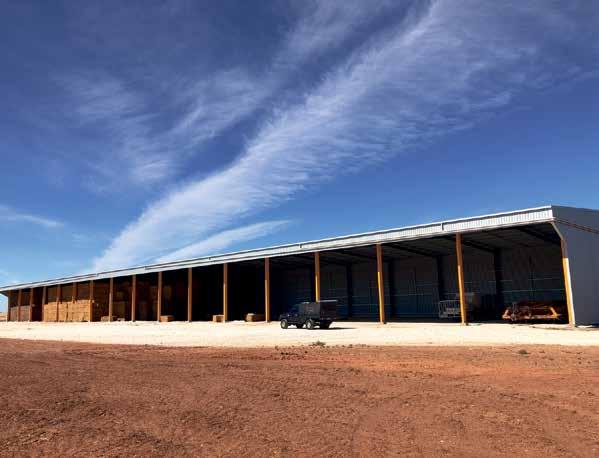










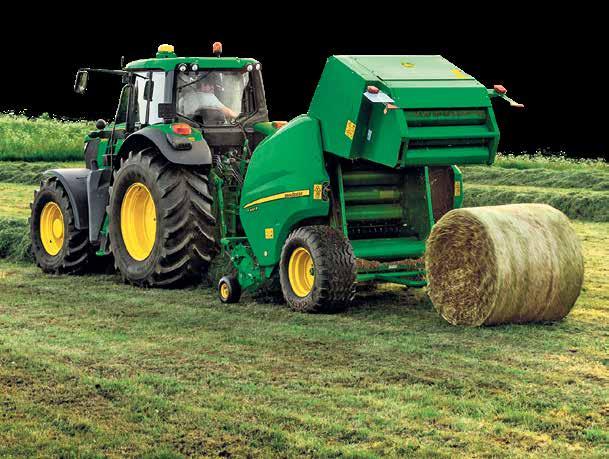

Across the sheep industry, farmers and shearers are fac ing delays and challenges brought on by consistent spring rain.
DMD director and stock agent An drew McIllree said rain had ‘dra matically affected’ the sheep industry throughout spring and into summer.
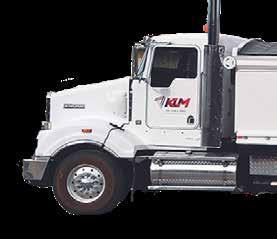
“The rain and cold have affected feed so lambs, in particular, are not as heavy or strong as they have been in the past,” he said.

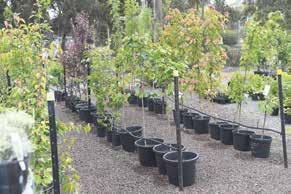

“The feed is not as nutritious, so sheep haven’t been doing as well.
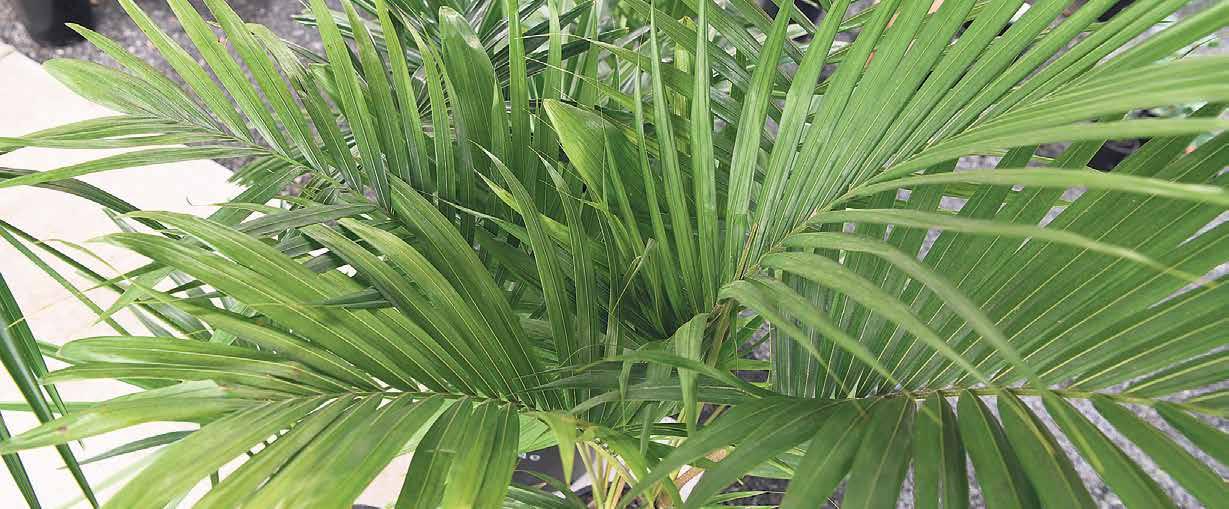
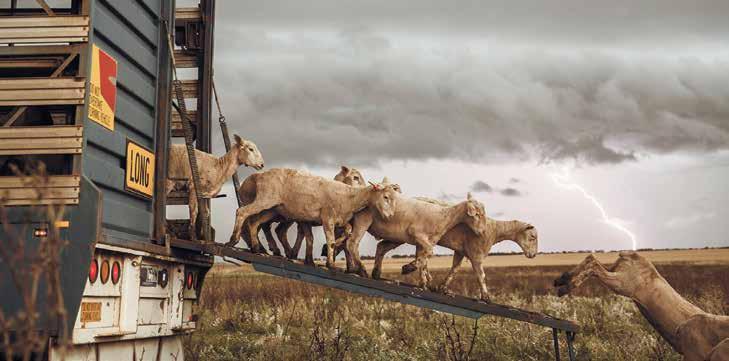

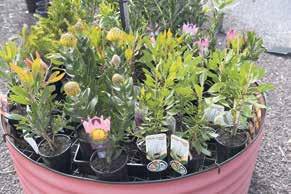
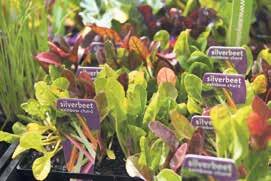
“The challenges compound with shearing also delayed and a real prob lem particularly around the Wimmera with flystrike.
“Farmers who haven’t got sheep shorn have jet them, some more than once because the jet doesn’t absorb into the wet wool.

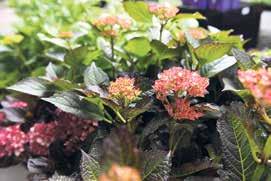


“There’s a big job ahead to get a lot of lambs shorn.”
Mr McIllree said this spring had been far from a normal season.
“Some farmers will choose to carry their lambs through, get them shorn when they can and run them through stubbles to finish them off,” he said.
“Others are taking what they can get for lambs now because they’re unsure what the quality of stubble will be like on the other side of harvest.

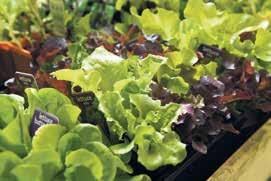
“It’s all about management now and
doing what you can, but it will be interesting to watch what happens on the other side.
“Mutton is flat, but I am not sure what is causing that. Good lambs are selling well and a lot of store lambs on the market are selling okay, but not like in previous years.”
Kelly Shearing Services owner Bryce Kelly said he was experiencing the worst run into Christmas he has ever had.
“It’s a bit of a disaster at the moment for farmers and contractors,” he said.
“September to Christmas time is normally very hectic, so it’s been very frustrating for everyone because it hasn’t stopped raining, people haven’t been able to get sheep dry enough and everyone is behind.
“There are too many sheep that need to be shorn by Christmas time that probably won’t all get shorn.
“People need to put their rams out for mating next year and they haven’t even got the wool off them, so that makes it very tricky.”
Mr Kelly said he was still working on jobs that would normally be fin ished in October.
“These coming months will be inter esting. It will be a long haul trying to catch up,” he said.
“These days we shear pretty much year-around and there’s still plenty of work, so what we were going to do
in January and February is probably going to be pushed back trying to do the work we should have done before Christmas.
“I’m definitely in the biggest pickle I have ever been in before – even with the last two years dealing with COVID. I just got by doing the amount of work we needed to get done by Christmas, whereas this year with all the rain we haven’t got a hope.”
Mr Kelly said farmers were also combating flystrike.
“There’s a bit of flystrike starting to
happen, which is a worry. People are jetting sheep and jetting lambs trying to prevent it, but it is a problem,” he said.
“People crutch before shearing so they don’t have to worry as much, but sheep are getting body struck in this sort of humid weather after a lot of rain, which is a big worry.
“No-one can control the weather and it’s nobody’s fault, but it’s going to be very frustrating for people between now and Christmas.
“Another problem is normally we
have the toughest shearing of merinos out of the way by now and moving into the easier crossbreds and lambs, but we’re stuck trying to shear me rinos.
“Shearers are getting frustrated and looking for better shearing sheep, so it’s hard to keep them on jobs to get them all shorn.
“It’s a freak year. A few older farm ers that I have spoken to have never seen anything like it in more than 30 years.”
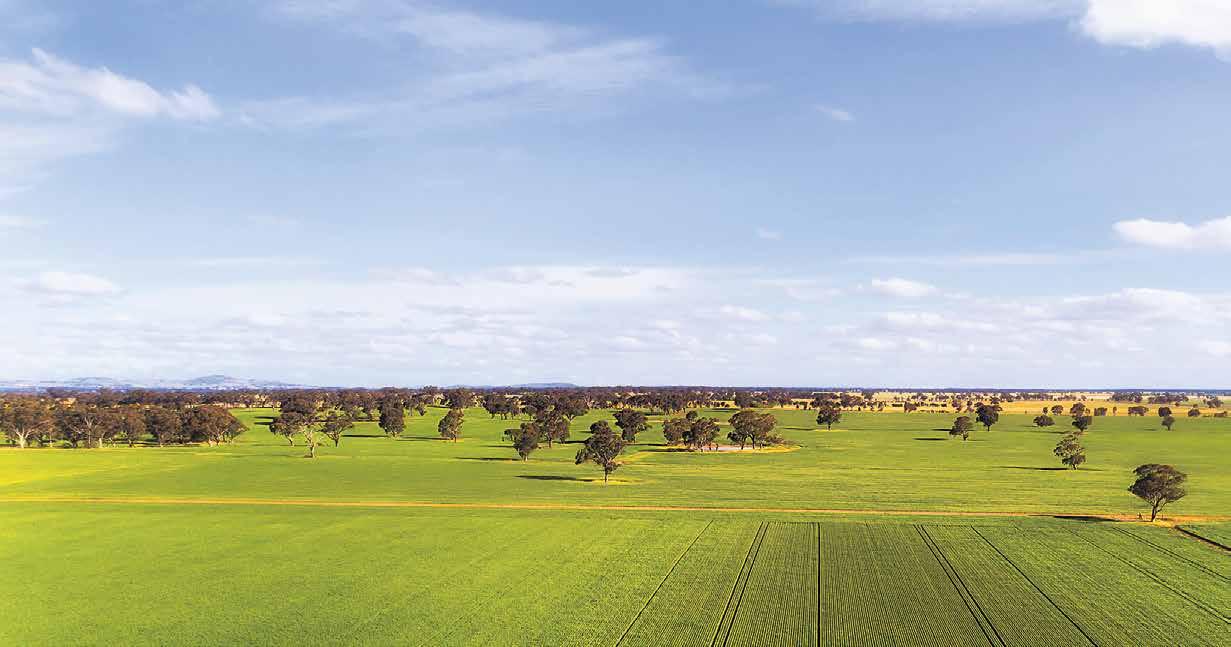

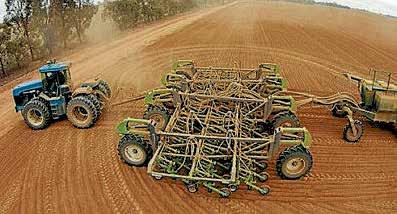
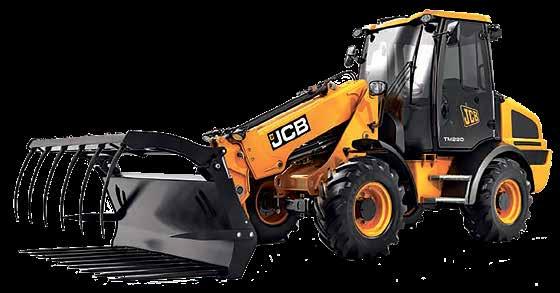

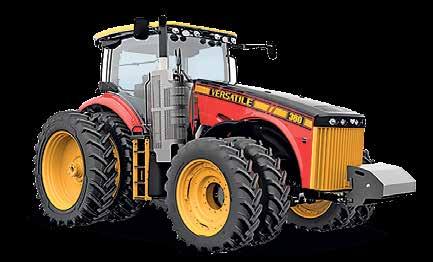
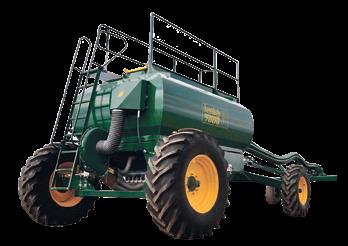
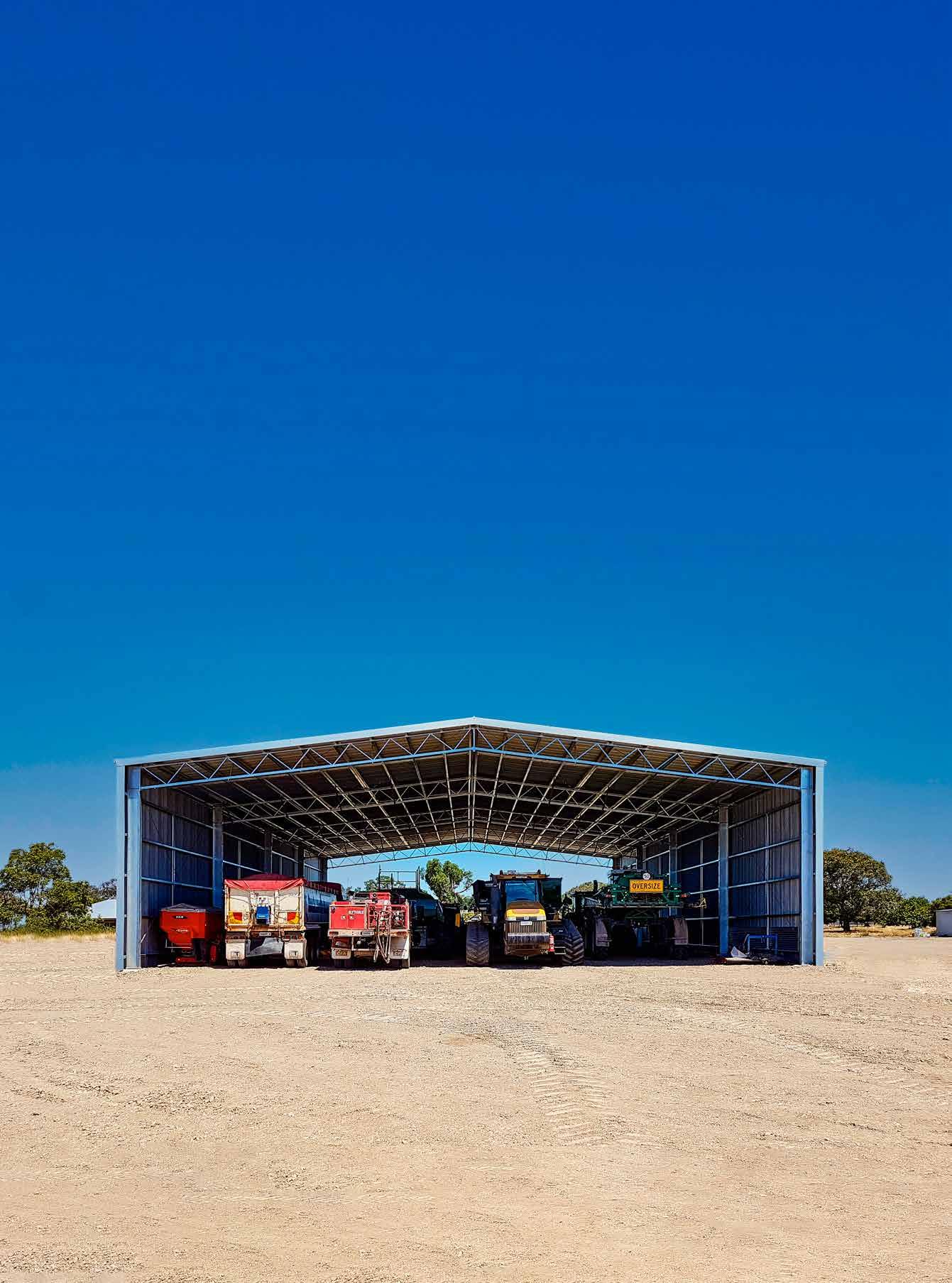
With significant rain across the country and continued supply chain issues, commodity prices across the Wimmera con tinue to change week on week.
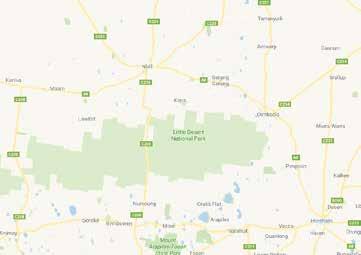
Grain prices are marginally de creasing heading into the 2022-23 harvest compared with early spring.
Department of Agriculture, Fisher ies and Forestry reported Australian export prices, on November 17, had dropped between two and four per cent on the week previous.
However, the prices are up seven to 29 percent higher than prices at the same time last year.
The report showed milling wheat was exported at $594 a tonne, feed wheat sold for $541 a tonne and
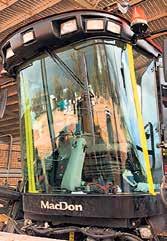
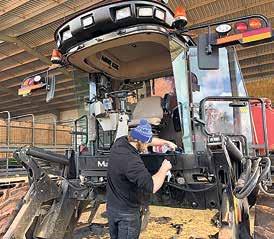
feed barley was exported at $482 a tonne. Canola was exported at $1095 a tonne.
In the Wimmera, recorded bid pric es for APW1 MG wheat last week were $412 to $424; barley, $310 to $320; and canola, $710 to $734.50.
In the livestock industry, sheep sales at Horsham Regional Livestock Exchange are seeing mixed quality lambs with prices increasing on the week prior.
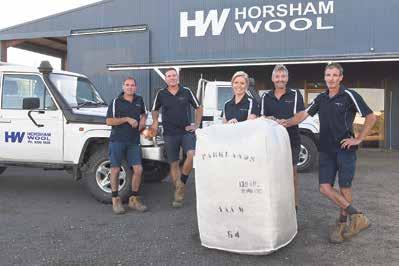
Graham Pymer’s market report on Wednesday last week noted 9075 head of livestock was yarded.
This is up from 7550 the week prior, and down from 24,050 on No vember 9 – the largest spring yarding since 2018. November 2 saw 14,200 livestock yarded.
On November 23, medium-weight lambs sold from $180 to $220 with heavier weights selling from $227 to $235 per head.
Light-weight lambs sold from $109 to $149 per head.
The old lambs sold to a top of $238 per head.
Big runs of young merino wethers went for $97 to $113 and from $75 to $120 per head for merino ewe lambs.
Sheep numbers were up at 3100 sold to steady competition.
Merino ewes sold to $160 and crossbred ewes to $150 per head.
Light-weight sheep sold from $45 to $96 per head and medium-weight sheep from $83 to $129 per head.
Rams sold for up to $80 per head.
A new podcast series aims to drive social change to improve the safety of farming families.
The Victorian Farmers Federation has launched the podcast as part of its ‘Making our Farms Safer Proj ect’, MOFS.
The federation’s vice-president Danyel Cucinotta, also chair of the federation’s child safety on farms steering committee, said the initial two-part series featured tips and guidance to reduce accidents involv
ing children on the farm. “The cam paign focuses on better outcomes for children aged 10 to 15, who are per forming work-related task on farms. Essentially, we want everyone on the farm to be able to go home safely at the end of the night,” she said.
“Influencing change is difficult no matter the subject.
“Influencing cultural change is even harder and that’s what these podcasts are striving to do.”
The podcast series also features

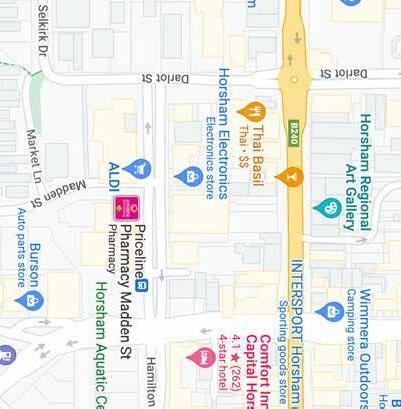
the Head of Trauma and Burns Unit at The Royal Children’s Hospital Melbourne, Dr Warwick Teague, and his insight when dealing with child injury and trauma.
“Treating injuries is important, but preventing injuries is so much more important,” he said.
The podcast series is available via your favourite streaming app and searching ‘Victorian Farmers Fed eration’.
Western AG is continuing its ‘support ing communities’ campaign with do nations of automated external defibril lators, AEDS, to rural communities.
The company’s 2022 Community Defib Project saw a defibrillator in stalled at the newly opened Goroke Community Complex.
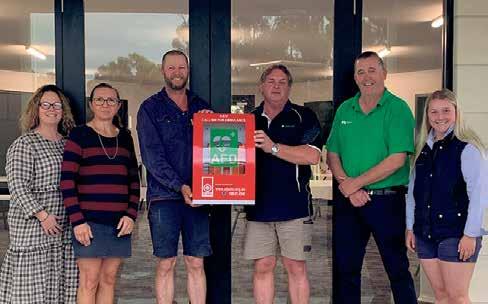
Western AG has been installing one AED a month across its regional branch network.
St Johns Australia reports sudden cardiac arrest continues to be one of the leading causes of death in Australia and within the first few minutes of experiencing cardiac arrest, there is an
increased chance in survival if an AED is available.
Western AG business development manager Chris Drew said the com pany was passionate about creating a long-term, community-minded cam paign where new, community focused projects could be introduced to sup port regions where Western AG is based.
“For example, we are providing spe cific funding for a particular cause or pain point, which in this case was es tablishing an AED installation project for communities in need,” he said.
Imanaged to sneak into a dinner in Sydney recently, hosted by the Australian Climate Leaders Coalition.
Most of the participants were from the ‘big end of town’ – chief executives and directors of large, listed companies, super funds and venture capital groups. I’d registered as managing direc tor at Farm Trade Australia. It sounded important enough so no-one checked our market cap and they just waved me in.


The dinner discussion was titled, ‘Road map to 2030’. It was clear from the debate there are still diverse views around how we, as a nation, achieve the climate objectives we’ve set.
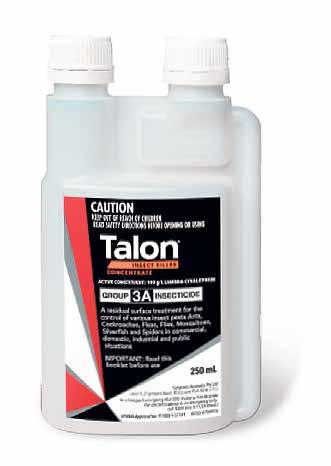


The majority of people accept the need to sig nificantly reduce our carbon footprint.

What wasn’t clear is how to do this in a way that doesn’t destroy industry, through vastly higher energy costs, or create a consumer back lash because of cost of living increases.



The chief executive of a super fund asked how we stimulate a well-informed, national discus sion about this issue. No-one could answer the question.


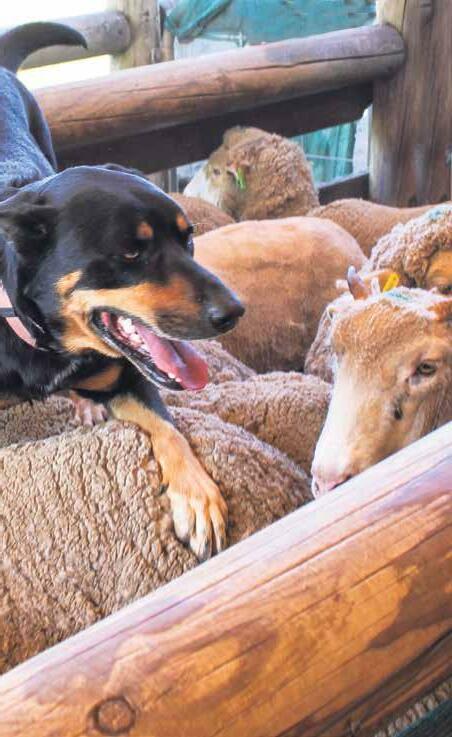

The business sector does have the capability to lead this. But self-interest is likely to derail the discussion.
The Federal Government should lead the way, but so often blatant politics hijacks good policy debate.


So where does all of this leave us in agricul ture?
I came away from the dinner surprised by the lack of clarity around the transition from an economy dependent on fossil fuels for energy and export revenue, to a nation of smart valueadd industries powered by renewables.
I’d hoped the corporate heavyweights had the answers, but I don’t think they do. It seems this road map has many crossroads and no signposts.
In ag, we could sit back and let big government and big business sort this out. We could think policy design is not our problem.
But then I consider data from the Australian Bureau of Statistics, the Federal Government and the Reserve Bank of Australia on the top 20 emissions intense sub-industries in Australia.

It shows sheep, grains and cattle are second only to electricity when measuring greenhouse gas emissions.
Like it or not, we’re in the middle of this dis cussion.
So let’s engage where we can to shape a future that works for our farms and rural communities.
Farmers are natural innovators. We’ve already made significant progress towards a more sus tainable future through practices such as no-till, stubble retention and investment in efficient irrigation systems.
We will need to get better at measuring these gains.
Government, and society, will demand evi dence. And by doing so we can demonstrate agriculture is not to be seen as a problem, but as part of the solution.


Following significant rain across the Wimmera throughout Septem ber and October, Birchip Cropping Group, BCG, is reminding farmers that safety is important when recover ing bogged machinery.
BCG has six messages for farmers to safely recover machinery as paddocks across the region remain wet and muddy heading into harvest.
The first is to understand the ratings of straps and shackles, including the working load limit and break strength and how to interpret these when used for recovery.
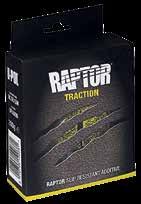
Secondly, communication, to ensure all staff are trained in how to avoid getting bogged and how to use recovery equip ment safely.
BCG advises that farmers ‘stop and think’ before entering a paddock, calcu lating the risk of becoming bogged.







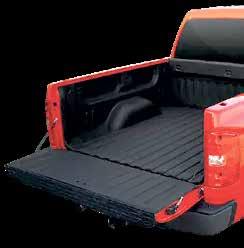
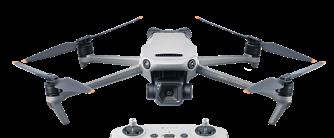


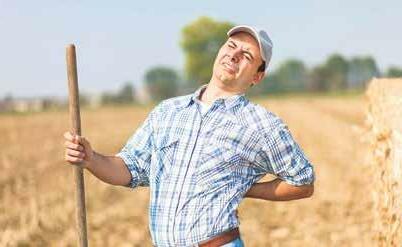


When someone does become bogged, they recommend stopping and not trying to drive out; rather, think how to safely recover the vehicle and if it needs to be done immediately.
The fourth message is to unload the ve hicle – removing unnecessary weight from bogged machinery will make it easier and safer to recover.

Another recommendation is to dig, if safe to do so, because digging can help relieve pressure on machinery and aid in recovery.

The final message is to ensure recov
ery equipment is looked after, out of the weather and stored clean.
BCG highlighted these messages to more than 550 farmers and industry workers at its Safely Recovering Machinery Field Day at Warracknabeal earlier this month.
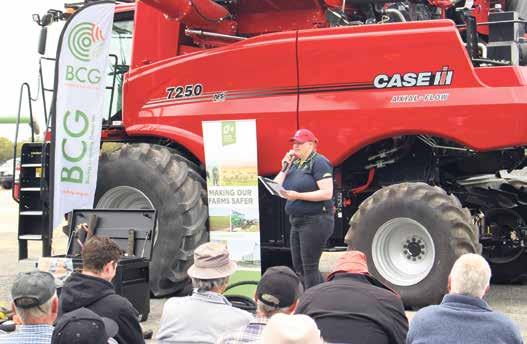
BCG senior extension and communica tion manager Kelly Angel organised and facilitated the event.
“Having a good plan is imperative and remembering the best way to get out of a bog is not to get bogged,” she said.
“Using chains is also not recommended
as they have a high risk to safety with lots of moving parts.
“We thank everyone who attended the event and our partners for working with us to bring such a relevant need-driven event together so quickly.
“Thanks to VFF Making Farms Saf er, WorkSafe, Warakirri Cropping, the National Centre for Farmer Health, O’Connor’s, Emmetts, Belle-Vue Machin ery, Horsham Heavy Towing, Blake Snake Recovery Strops and farmer Ross Johns who hosted us.”
“The best way to get out of a bog is not to get bogged” – Kelly Angel
